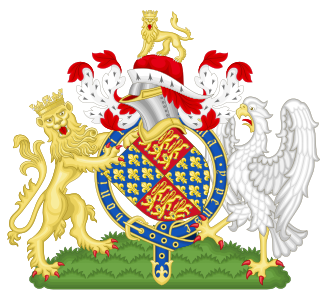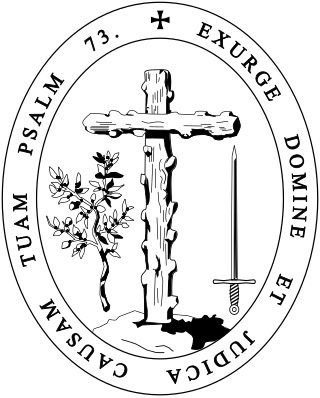Related Research Articles
Catharism was a Christian quasi-dualist or pseudo-Gnostic movement which thrived in Southern Europe, particularly in northern Italy and southern France, between the 12th and 14th centuries. Denounced as a heretical sect by the Catholic Church, its followers were attacked first by the Albigensian Crusade and later by the Medieval Inquisition, which eradicated the sect by 1350. Many thousands were slaughtered, hanged, or burnt at the stake, sometimes without regard for "age or sex."

Hasidism, sometimes spelled Chassidism, and also known as Hasidic Judaism, is a religious movement within Judaism that arose as a spiritual revival movement in Poland and contemporary Western Ukraine, during the 18th century, and spread rapidly throughout Eastern Europe. Today, most of those affiliated with the movement, known as hassidim, reside in Israel and in the United States.

The Inquisition was a judicial procedure and a group of institutions within the Catholic Church whose aim was to combat heresy, apostasy, blasphemy, witchcraft, and customs considered deviant. Violence, torture, or the simple threat of its application, were used by the Inquisition to extract confessions and denunciations from heretics. Studies of the records have found that the overwhelming majority of sentences consisted of penances, but convictions of unrepentant heresy were handed over to the secular courts, which generally resulted in execution or life imprisonment. The Inquisition had its start in the 12th-century Kingdom of France, with the aim of combating religious deviation, particularly among the Cathars and the Waldensians. The inquisitorial courts from this time until the mid-15th century are together known as the Medieval Inquisition. Other groups investigated during the Medieval Inquisition, which primarily took place in France and Italy, include the Spiritual Franciscans, the Hussites, and the Beguines. Beginning in the 1250s, inquisitors were generally chosen from members of the Dominican Order, replacing the earlier practice of using local clergy as judges.

The Order of the Brothers of the Blessed Virgin Mary of Mount Carmel, known as the Carmelites or sometimes by synecdoche known simply as Carmel, is a Roman Catholic mendicant religious order for men and women. Historical records about its origin remain uncertain, but it was probably founded in the 12th century on Mount Carmel in the Crusader States. Berthold of Calabria, as well as Albert of Vercelli, have traditionally been associated with the founding of the order, but few clear records of early Carmelite history have survived. The order of Carmelite nuns was formalised in 1452.

John of the Cross, OCD was a Spanish Catholic priest, mystic, and Carmelite friar of converso origin. He is a major figure of the Counter-Reformation in Spain, and he is one of the thirty-seven Doctors of the Church.
Bogomilism was a Christian neo-Gnostic, dualist sect founded in the First Bulgarian Empire by the priest Bogomil during the reign of Tsar Peter I in the 10th century. It most probably arose in the region of Kutmichevitsa, today part of the region of Macedonia.

The Palmarian Church, officially registered as the Palmarian Christian Church and also known as the Palmarian Catholic Church, is a Christian church with an episcopal see in El Palmar de Troya, Andalusia, Spain. The Palmarian Church claims to be the exclusive One, Holy, Catholic and Apostolic Church founded by Jesus Christ. It claims that the Holy See, the institution of the Papacy and the headquarters of the Catholic Church was moved to El Palmar de Troya at the Cathedral-Basilica of Our Crowned Mother of Palmar, under the auspices of the Patriarchate of El Palmar de Troya, in 1978, due to the apostasy of the Roman Catholic Church from the Catholic faith.

De heretico comburendo or the Suppression of Heresy Act 1400 was a law passed by Parliament under King Henry IV of England in 1401 for the suppression of the Lollards. It punished seditious heretics with burning at the stake. This law was one of the strictest religious censorship statutes ever enacted in England, affecting preaching and possession of Lollard literature.
The historical revision of the Inquisition is a historiographical process that started to emerge in the 1970s, with the opening of formerly closed archives, the development of new historical methodologies, and, in Spain, the death of the ruling dictator Francisco Franco in 1975. New works of historical revisionism changed our knowledge of the history of the Roman and Spanish Inquisitions.

The Rite of the Holy Sepulchre, commonly called the Carmelite Rite, is the liturgical rite that was used by the Canons Regular of the Holy Sepulchre, Hospitallers, Templars, Carmelites and the other orders founded within the Latin Patriarchate of Jerusalem.

The Tribunal of the Holy Office of the Inquisition, commonly known as the Spanish Inquisition, was established in 1478 by the Catholic Monarchs, King Ferdinand II of Aragon and Queen Isabella I of Castile. It began toward the end of the Reconquista and was intended to maintain Catholic orthodoxy in their kingdoms and to replace the Medieval Inquisition, which was under papal control. It became the most substantive of the three different manifestations of the wider Catholic Inquisition, along with the Roman Inquisition and the Portuguese Inquisition. The "Spanish Inquisition" may be defined broadly as operating in Spain and in all Spanish colonies and territories, which included the Canary Islands, the Kingdom of Naples, and all Spanish possessions in North America and South America. According to modern estimates, around 150,000 people were prosecuted for various offences during the three-century duration of the Spanish Inquisition, of whom between 3,000 and 5,000 were executed, approximately 2.7 percent of all cases. The Inquisition, however, since the creation of the American courts, has never had jurisdiction over the indigenous. The King of Spain ordered "that the inquisitors should never proceed against the Indians, but against the old Christians and their descendants and other persons against whom in these kingdoms of Spain it is customary to proceed".

In Roman Catholicism, the Sabbatine Privilege refers to a belief in the early liberation of souls from Purgatory, on the first Saturday after death, through the special intercession and petition of the Virgin Mary. The Privilege is based on an apocryphal Papal Bull Sacratissimo uti culmine, dated 3 March 1322 and attributed to Pope John XXII. The Bull is universally regarded by scholars as inauthentic.
Charles Neale (1751–1823) was a leader of the Jesuit mission in America. Neale came from a prominent Catholic family of Maryland.
The Brethren of the Free Spirit were adherents of a loose set of beliefs deemed heretical by the Catholic Church but held by some Christians, especially in the Low Countries, Germany, France, Bohemia, and Northern Italy between the thirteenth and fifteenth centuries. The movement was first identified in the late thirteenth century. It was not a single movement or school of thought, and it caused great unease among Church leaders at the time. Adherents were also called Free Spirits.
Thomas Netter, OCarm was an English Scholastic theologian and controversialist. From his birthplace he is commonly called Thomas of Walden, or Thomas Waldensis.
Heresy in Christianity denotes the formal denial or doubt of a core doctrine of the Christian faith as defined by one or more of the Christian churches.

The 14th century saw major developments in Christianity, including the Western Schism, the decline of the Crusades, and the appearance of precursors to Protestantism.
Thomas Cranley DD a.k.a. Thomas Craule was a leading statesman, judge and cleric in early fifteenth-century Ireland, who held the offices of Chancellor of Oxford University, Archbishop of Dublin and Lord Chancellor of Ireland.

Pedro de Deza (1520–1600) was a Spanish Roman Catholic cardinal and bishop.
Freemasonry in Spain is first recorded in 1728, in an English lodge. As various papal bulls condemned Freemasonry the Spanish Inquisition did their best to close lodges and demonise Freemasons, therefore the success of Freemasonry from year to year depended on the sympathy or antipathy of the ruling regime. Nevertheless, lodges and even Grand Lodges were formed, and even thrived during more liberal periods. When Francisco Franco consolidated power in 1939, all Freemasonry was banned. In 1979, four years after Franco's death, bans on Freemasonry were declared unconstitutional, and several Grand Lodges and Orients now flourish in Spain.